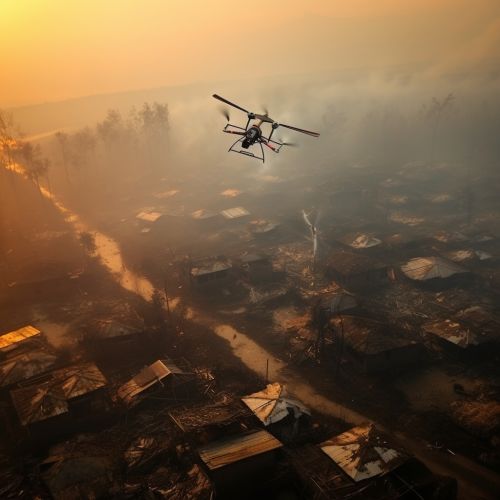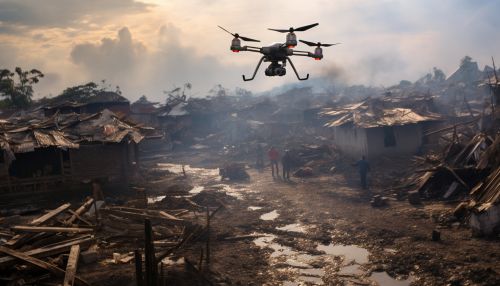The Role of Autonomous Systems in Disaster Response
Introduction
Autonomous systems, also known as autonomous robots or unmanned systems, are increasingly being utilized in disaster response scenarios. These systems, which can operate independently of human control, are capable of performing tasks that are either too dangerous or impossible for humans to undertake. This article delves into the role of autonomous systems in disaster response, exploring their capabilities, applications, and the challenges they face.


Autonomous Systems in Disaster Response
Autonomous systems in disaster response refer to the use of autonomous technology, such as unmanned aerial vehicles (UAVs), unmanned ground vehicles (UGVs), and unmanned underwater vehicles (UUVs), in responding to natural or man-made disasters. These systems can perform a variety of tasks, from search and rescue operations to damage assessment and recovery efforts.
Search and Rescue Operations
In the aftermath of a disaster, one of the most critical tasks is to locate and rescue survivors. Autonomous systems can play a crucial role in this aspect. For instance, UAVs can be used to survey large areas quickly, providing real-time imagery and data to rescue teams on the ground. This can significantly speed up the search process and increase the chances of finding survivors.
UGVs, on the other hand, can navigate through debris and rubble, reaching areas that are inaccessible to humans. Equipped with sensors and cameras, these vehicles can locate trapped individuals and relay their location to rescue teams. In some cases, UGVs can even assist in the extraction of survivors.
Damage Assessment
Following a disaster, it is essential to assess the extent of the damage to infrastructure and the environment. This information is crucial in determining the necessary recovery efforts and allocating resources effectively. Autonomous systems, particularly UAVs, can play a significant role in this process.
UAVs can fly over disaster-stricken areas, capturing high-resolution images and videos. These can be used to create detailed maps of the affected areas, highlighting the extent of the damage. Additionally, UAVs equipped with LiDAR sensors can generate 3D models of the terrain, providing a more accurate representation of the damage.
Recovery Efforts
Autonomous systems can also assist in recovery efforts following a disaster. For example, UGVs can be used to clear debris and rubble, making areas safe for humans to enter. Similarly, UUVs can be used in underwater recovery operations, such as locating and retrieving sunken objects.
Challenges and Limitations
While autonomous systems offer numerous advantages in disaster response, they also face several challenges and limitations. These include technical issues, such as limited battery life and difficulties in navigating complex environments, as well as regulatory and ethical concerns.
Technical Challenges
One of the primary technical challenges faced by autonomous systems in disaster response is limited battery life. Most autonomous systems rely on batteries for power, which can limit their operational time. This can be a significant issue in disaster scenarios, where prolonged operations may be required.
Navigating complex environments is another challenge. While autonomous systems have advanced navigation capabilities, they can still struggle in certain situations. For example, UAVs may have difficulties flying in adverse weather conditions, while UGVs can struggle to navigate through dense rubble.
Regulatory and Ethical Challenges
Regulatory challenges can also hinder the use of autonomous systems in disaster response. For instance, the use of UAVs is often subject to strict regulations, which can limit their deployment in certain scenarios.
Ethical concerns also arise with the use of autonomous systems. For instance, questions about privacy and data security can arise when UAVs capture imagery and data in disaster-stricken areas. Additionally, the use of autonomous systems in search and rescue operations raises questions about the value of human judgment and decision-making in life-or-death situations.
Conclusion
Autonomous systems have the potential to revolutionize disaster response, offering capabilities that can enhance search and rescue operations, damage assessment, and recovery efforts. However, these systems also face significant challenges, including technical issues and regulatory and ethical concerns. As the technology continues to advance, it will be crucial to address these challenges to fully realize the potential of autonomous systems in disaster response.
